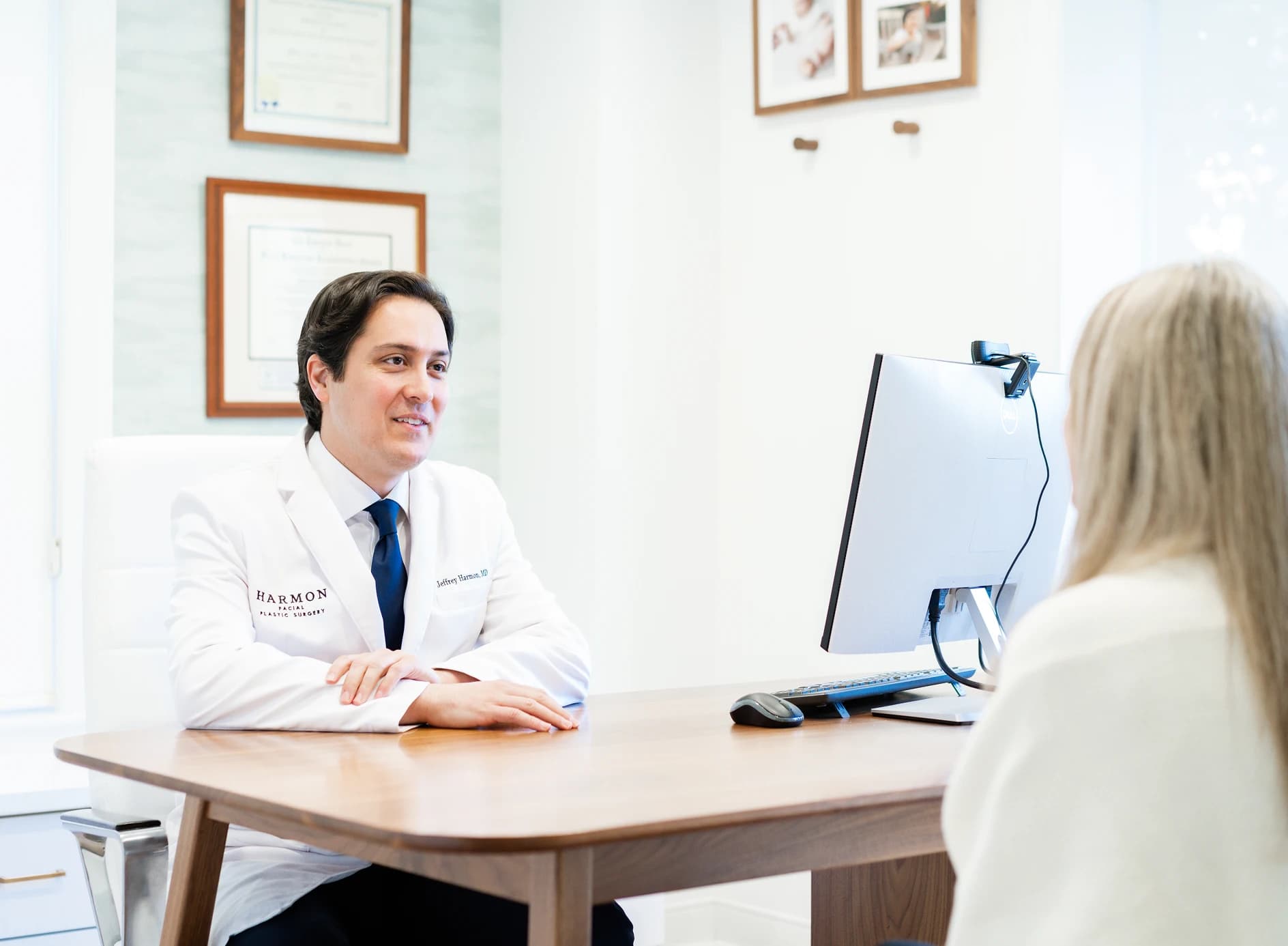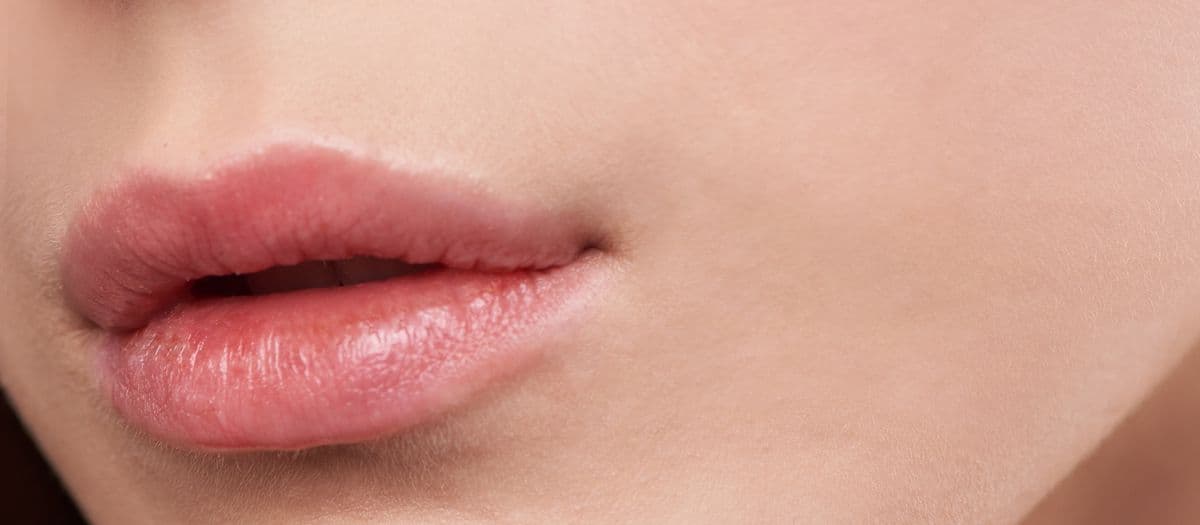Hair Loss Treatment
(Growth Factors)- Minimally invasive procedure without incisions
- Can be performed with local anesthesia only
- Utilizes platelets from the patient's own body
- Can be effective for men and women
Contact Us
What is Hair Loss Treatment?
Hair loss treatment, otherwise known as Platelet-Rich-Plasma (PRP) treatment, involves drawing blood from the patient and isolating and concentrating a component of the blood called platelets. These platelets are then injected into the scalp in areas of hair thinning. The platelets release signaling molecules when activated in the scalp that can help existing hair follicles transition from a resting phase to a phase of active growth. This procedure does not replace hair follicles that have been lost. Therefore, it is not a replacement for hair restoration surgery. It can, however, improve healing after hair restoration surgery.
What Conditions Does the Procedure Address?
This procedure helps address hair thinning due to hormone-related hair loss, otherwise known as androgenic alopecia. Androgenic alopecia is the most common form of hair loss for men and women. The conditions PRP treatment can help address include:
Why Choose Dr. Harmon
The desire for youthfulness is understandable. There is no area more important than the face. After all, the face cannot be hidden. It is how we present ourselves to the world. Dr. Harmon works with a refined eye and trained hands to develop a personalized treatment plan with you, utilizing advanced techniques in surgical and non-surgical care of the face, nose, eyes, neck and hair.
Fellowship trained facial plastic surgeons have a unique specialized skill set in performing surgical and non-surgical procedures on the face, nose, eyes, neck and hair. The pathway to becoming a facial plastic surgeon begins with five years of rigorous training in head and neck surgery. This training is focused on all aspects of surgery for the head and neck, in addition to aesthetic and reconstructive procedures.
A small pool of top performing graduates from head and neck surgery programs are then selected to complete sub-specialty training as a fellow in facial plastic and reconstructive surgery through the American Academy of Facial Plastic and Reconstructive Surgery (AAFPRS).
Dr. Harmon completed his fellowship in facial plastic surgery through the AAFPRS with the world-renowned facial plastic surgeon Dr. Andrew Jacono on Park Avenue in New York City. Dr. Jacono is world renowned for developing the extended deep plane facelift technique. Dr. Harmon is one of the few surgeons in the world, and the only surgeon in the Cincinnati area, fellowship trained in this technique by Dr. Jacono.
Quad A Accredited Surgery Suite
Harmon Facial Plastic Surgery is proud to have a Quad A accredited operating room and facility in our office. Our single-physician, single-specialty facility meets or exceeds the strict guidelines and high standards set forth by Quad A, demonstrating our strong commitment to patient safety and excellence in surgical care. We utilize the services of board-certified anesthesiology physicians only as well as our own personal clinical support staff to ensure the most comfortable, safest experience for our clients.
Overview of the Procedure
The team at Harmon Facial Plastic Surgery works tirelessly to prepare patients well for their procedure. The time spent with patients and resources provided facilitates a smooth transition from the procedure through recovery. The following overview is a broad summary of the information provided to patients:
Procedure Consultation
Expect a detailed, informative discussion with Dr. Harmon about your concerns and aesthetic goals. He will develop a personalized treatment plan to address these concerns and goals.
Pre-Treatment Preparation
There is no specific pre-treatment preparation necessary prior to treatment. However, there may be some surgical or non-surgical treatments that could dictate the time frame in which hairloss treatment can be administered. It is also ideal to avoid blood thinning medications such as nonsteroidal anti-inflammatory drugs (NSAIDs) such as ibuprofen for one week prior to treatment if possible.
Day of Treatment
Patients are instructed to arrive at the office in comfortable clothes. The surgical plan is discussed with the patient in detail. Paperwork is completed. Photos are usually taken pre-operatively. Finally, the patient meets the surgical team, which may include nurses, anesthesiologists, and/or scrub technologists, depending on the procedure(s) and type of anesthesia used.
Follow-Up Appointment
Patients undergo four (4) treatment sessions. They undergo one treatment a month for the first three months followed by a fourth treatment approximately 6 months after the first – three months after the third – treatment.
Social Readiness
Some swelling of the scalp is expected after treatment. Most patients are ready to socialize approximately twenty-four (24) hours after treatment. There are no incisions and, therefore, no sutures to remove.
Ideal Candidates for Hair Loss Treatment
Ideal candidates for hair loss treatment include those patients who:
- Demonstrate thinning hair with still existing hair follicles in a resting phase, which can appear as thin, white, miniaturized hair
- Are undergoing hair restoration surgery and who want to speed the growth of the newly transferred follicles
Candidates for hair loss treatments include those who have concerns about thinning hair. Most candidates range in age from their twenties (20s) to seventies (70s). A consultation is essential to determine candidacy for the procedure, because there may be factors that preclude this procedure for certain individuals. A consultation will help establish reasonable expectations about what hair loss treatments can and cannot accomplish as well as any anatomic and/or physiological factors that may influence your results.
What to Expect from Recovery
Recovery from hair loss treatment is specific to the individual. The duration of recovery will vary from person to person.
Pain is generally minimal after the procedure. However, a small percentage may experience headaches during the first twenty-four (24) to forty-eight (48) hours after the procedure.
Some swelling is expected after hair loss treatments. Post-operative swelling generally improves significantly by twenty-four (24) to forty-eight (48) hours after surgery.
Some patients experience headaches
Swelling is improved
Benefits of Hair Loss Treatment
The potential benefits of hair loss treatment include:
- Improved hair thickness in areas of hair thinning
- A treatment for hair thinning in patients who are not a candidate for hair restoration surgery
Risks of Hair Loss Treatment
The potential risks of hair loss treatment include, but are not limited to:
- Bruising
- Swelling
- Infection
- Bleeding
- Hair shedding
Combine Hair Loss Treatment with Other Facial Enhancements
PRP treatment can be combined with almost any other surgical or non-surgical treatment. It can be particularly helpful during hair restoration surgery. Procedures that can be combined with PRP treatment include:
Hair Restoration (FUE/FUT)
Combining PRP with FUE or FUT hair restoration can help stimulate follicle health, promote thicker regrowth, and optimize overall outcomes by enhancing healing and long-term density.
Deep Plane Facelift
While PRP supports hair revitalization, a deep plane facelift may rejuvenate underlying facial structures. Combined, they can help restore youthful volume and vibrancy from scalp to jawline.
Neck Lift
A neck lift can refine the lower face and jawline, while PRP treatment may address thinning hair, ensuring both the facial frame and hairline reflect a cohesive, youthful aesthetic.
Brow Lift
As PRP helps enhance hair density, a brow lift can elevate the upper face and reshape the brow line, creating harmony between a fuller hairline and refreshed expression.
Blepharoplasty
PRP can improve scalp health and hair growth, while blepharoplasty revitalizes the eye area. Together, they may create a more energized and youthful appearance from forehead to gaze.
Rhinoplasty
Rhinoplasty helps refine facial balance, and when paired with PRP hair restoration, the facial harmony and hairline may be enhanced for improved symmetry.
Fillers
While PRP may restore hair fullness, fillers help replenish volume in the face. When combined, these treatments may deliver a more vibrant look through both skin and hair enhancement.
Botox©
Botox© can smooth forehead lines and crow’s feet, and may complement PRP hair therapy by refining the surrounding facial canvas for a polished, youthful result.

Book Your Consultation
Take the first step toward your aesthetic goals with a personalized consultation. Dr. Harmon will listen to your concerns, answer your questions, and guide you through your options. Schedule your consultation today and discover how expert care can make a difference.
Read More About Hair Loss

Tear Trough Filler: An Explainer
Hyaluronic acid filler in the tear troughs can address specific concerns about the interface between the lower eyelid and cheek. It is important to seek not only a fellowship-trained but also a double board-certified facial plastic surgeon to help determine whether placement of hyaluronic acid filler in the tear troughs is an appropriate treatment for your concerns. The tear trough breaks a smooth, youthful transition from the lower eyelid to the cheek A youthful face has a smooth transition from the lower eyelid to the cheek. The tear trough is a line or depression that develops at the border between the lower eyelid and cheek. It worsens as the cheek droops and the lower eyelid bags develop. The tear trough is not a wrinkle but the location of a ligament separating the lower eyelid fat from the cheek fat. The deeper the tear trough the more visible it becomes due to its shadowing effects. Filler is placed precisely in in the tear troughs with a microcannula Hyaluronic acid filler such as Restylane© products can be used to soften the appearance of the tear trough. Restylane© and most Juvederm© brand hyaluronic acid fillers are FDA-approved products but placed in the tear troughs off-label, meaning FDA-approval was not sought specifically for placement of these products in the tear troughs. Currently the only hyaluronic acid filler FDA-approved specifically for placement in the tear troughs is Juvederm© Vollbella© XC and Restylane© Eyelight™. Other products have long been used safely and effectively in this area off-label, though it is important that injectors have a conversation with their patients about this fact. A blunt-tipped microcannula rather than a needle is typically used to deposit the filler at the tear trough precisely, adding enough volume to treat the site without adding so much that the lower eyelids look "puffy." The microcannula may reduce the risk of bruising and swelling as well as the risk that the filler is injected into the wrong location, including a blood vessel. Recently, the media has published multiple articles calling into question the value of placing hyaluronic acid filler in the tear troughs, highlighting some of the rarest and most sensational risks associated with the procedure. This reporting, in my opinion, simply highlights the importance of an appropriately qualified provider administering the material at an appropriate location and depth in an appropriate patient (1). Filler can soften the tear troughs in individuals with appropriate anatomy The best candidates for placing filler in the tear trough often have a deep tear trough without severe lower eyelid bags. One should be cautious placing filler in the eyes with severe lower eyelid bags because it is more likely to make the area look "puffy." Some swelling is expected after treatment, however. The swelling resolves gradually over a few days in most patients. Patients are counseled to apply cold compresses to their lower eyelids and cheeks for the first 48 hours after treatment to accelerate this process. Some individuals are more likely to benefit from lower eyelid surgery (blepharoplasty) Deep tear troughs with lower eyelid bags are usually best treated with lower eyelid surgery (blepharoplasty). A consultation with a fellowship-trained, double board-certified facial plastic surgeon is recommended to determine candidacy for this procedure, because there may be factors that preclude this procedure for certain individuals. A detailed history and physical should always be performed prior to making the decision as to whether hyaluronic acid filler or surgery of the lower eyelids is the most appropriate treatment. Reasonable expectations must be established about what lower eyelid surgery can and cannot accomplish as with all plastic surgery procedures. Trust Your Face to a Facial Plastic Surgeon It is important to seek a fellowship-trained specialist in plastic surgery of the face and neck when you have concerns about age-related changes to your face and/or neck. Why Choose Dr. Harmon The mission of Harmon Facial Plastic Surgery is to help people along their journey towards self-confidence, to feel good about feeling good. Dr. Harmon is a double board-certified facial plastic surgeon. Dr. Harmon values making patients feel welcomed, listened to, and respected. Dr. Harmon graduated with honors from Cornell University with a Bachelor of Science degree in molecular biology. Dr. Harmon earned his medical degree from the University of Cincinnati. Dr. Harmon underwent five years of extensive training in head at neck surgery at the prestigious residency program at the University of Cincinnati. Dr. Harmon then underwent focused fellowship training in cosmetic facial plastic surgery through the American Academy of Facial Plastic and Reconstructive Surgery (AAFPRS) with the world-renowned surgeon, Dr. Andrew Jacono, on Park Avenue in New York City. Request a Consultation Request a consultation with Dr. Harmon at Harmon Facial Plastic Surgery in Cincinnati. Visit our clinic. You will learn more about Dr. Harmon's credentials, style and approach. Build a relationship with our dedicated team. Do not stop at searching "plastic surgery near me." Get in touch with us today to learn more! Contact Us References Torabi SJ, Massry G, Azizzadeh B. Are Tear Trough Fillers Really that Bad? Facial Plast Surg Aesthet Med. 2024 Dec 12.

What Can a Liquid Rhinoplasty Achieve?
Commonly referred to as a "non-surgical rhinoplasty" or a "liquid rhinoplasty," hyaluronic acid filler such as Restylane© products are often placed in the nose to achieve an aesthetic goal. However, this procedure is not appropriate for everyone and has specific limitations that people should be aware of. It is important to seek not only a fellowship-trained but also a double board-certified facial plastic surgeon if you have aesthetic concerns about your face and/or neck. This 24-year-old came to Dr. Harmon with a desire smooth the bump on her nasal bridge in a natural way and without surgery. Hyaluronic acid filler was added to the bridge of her nose above the bump in order to accomplish this. Placing Filler in the Nose Always Adds, Never Subtracts Placing filler in the deep tissue of the nose is always additive by definition and never a reductive procedure. This limits what can be accomplished when compared with nose surgery (rhinoplasty), which can be customized to address a wide variety of major and minor aesthetic concerns. The Treatment is Temporary Placing filler is also temporary. Hyaluronic acid filler typically lasts approximately 1 to 1.5 years, though it can last for less or more time in some instances. As a result, this procedure requires ongoing maintenance treatments to maintain the same effect. The Treatment is a FDA Off-Label Use of Hyaluronic Acid Filler It is important to note that treatment of the nose with hyaluronic acid filler is an FDA off-label use of these products. However, hyaluronic acid filler has been used in the nose for many years by well-trained, experienced, qualified medical professionals. Little-to-No Down Time It is, however, an in-office non-surgical procedure with little-to-no down time and no required anesthesia. Those are major benefits. A Liquid Rhinoplasty Can Effectively Address Two Concerns About the Nose Hyaluronic acid filler can be effective in improving a large, peaked nasal bridge by adding volume to the top of the bridge, thereby softening the curve of the nose. Filler can also be effective in creating the appearance of a lifted nasal tip in some individuals. However, a history of previous nose surgery (rhinoplasty) may preclude the placement of filler in the nasal tip due to concerns about the blood supply to the nasal tip after surgery. Trust Your Face to a Facial Plastic Surgeon It is important to seek a double board-certified, fellowship-trained specialist in plastic surgery of the face and neck when you have concerns about your face or neck. Why Choose Dr. Harmon The mission of Harmon Facial Plastic Surgery is to help people along their journey towards self-confidence, to feel good about feeling good. Dr. Harmon is a double board-certified facial plastic surgeon. Dr. Harmon values making patients feel welcomed, listened to, and respected. Dr. Harmon graduated with honors from Cornell University with a Bachelor of Science degree in molecular biology. Dr. Harmon earned his medical degree from the University of Cincinnati. Dr. Harmon underwent five years of extensive training in head at neck surgery at the prestigious residency program at the University of Cincinnati. Dr. Harmon then underwent focused fellowship training in cosmetic facial plastic surgery through the American Academy of Facial Plastic and Reconstructive Surgery (AAFPRS) with the world-renowned surgeon, Dr. Andrew Jacono, on Park Avenue in New York City. Request a Consultation Request a consultation with Dr. Harmon at Harmon Facial Plastic Surgery in Cincinnati. Visit our clinic. You will learn more about Dr. Harmon's credentials, style and approach. Build a relationship with our dedicated team. Do not stop at searching "plastic surgery near me." Get in touch with us today to learn more! Contact Us

Lip Lift versus Lip Filler
Have you wondered whether placement of hyaluronic acid filler such as Restylane© in the lips can impart a more voluminous and youthful appearance to your lips? Have you wondered how this compares with a surgical lip lift? The lip lift is a procedure that can be performed under local anesthesia or IV sedation to address specific aesthetic concerns of the lip that lip filler cannot. It is important to seek not only a fellowship-trained but also a double board-certified facial plastic surgeon if you have aesthetic concerns about your face and/or neck. The Lip Lift Can Address What Lip Filler Cannot The red portion of the upper lip loses height and volume as we age. Some individuals are born with thin, deflated lips. Lip filler can re-volumize deflated lips. However, lip filler cannot increase the height of the red lip without projecting it, potentially resulting in a "duck-lipped" appearance. In addition to the red lip, the area of the lip between the red lip and the base of the nose lengthens as we age. This can be worsened by overfilling the lip with hyaluronic acid. The lip lift can be an excellent option to improve the height of the red lip and restore a "pouty" appearance to the lip by reducing the overall length of the lip to a more youthful length. The incision is hidden in a natural crease at the base of the nose. Lip Filler Can Complement the Lip Lift It is important to note that while the lip lift can address aesthetic concerns lip filler cannot, this does not prevent you from receiving hyaluronic acid filler in the future to re-volumize a deflated lip as demonstrated in the before-and-after images below. In fact, hyaluronic acid filler can be a wonderful complement to the lip lift. The above patient underwent a lip lift followed by lip filler in order to balance her bottom lip volume with her top lip. Trust Your Face to a Facial Plastic Surgeon It is important to seek a double board-certified, fellowship-trained specialist in plastic surgery of the face and neck when you have concerns about your face or neck. Why Choose Dr. Harmon The mission of Harmon Facial Plastic Surgery is to help people along their journey towards self-confidence, to feel good about feeling good. Dr. Harmon is a double board-certified facial plastic surgeon. Dr. Harmon values making patients feel welcomed, listened to, and respected. Dr. Harmon graduated with honors from Cornell University with a Bachelor of Science degree in molecular biology. Dr. Harmon earned his medical degree from the University of Cincinnati. Dr. Harmon underwent five years of extensive training in head at neck surgery at the prestigious residency program at the University of Cincinnati. Dr. Harmon then underwent focused fellowship training in cosmetic facial plastic surgery through the American Academy of Facial Plastic and Reconstructive Surgery (AAFPRS) with the world-renowned surgeon, Dr. Andrew Jacono, on Park Avenue in New York City. Request a Consultation Request a consultation with Dr. Harmon at Harmon Facial Plastic Surgery in Cincinnati. Visit our clinic. You will learn more about Dr. Harmon's credentials, style and approach. Build a relationship with our dedicated team. Do not stop at searching "plastic surgery near me." Get in touch with us today to learn more! Contact Us
FAQ
Who administers hair loss treatments at Harmon Facial Plastic Surgery?
Dr. Jeffrey Harmon administers all hair loss treatments himself. Dr. Harmon has the detailed understanding of facial anatomy and the experience as a fellowship-trained facial plastic surgeon to provide the safest, most effective treatment.
How many sessions are required for optimal results?
Four sessions are generally required for optimal results, once monthly for 3 months followed by a fourth session 6 months after the first session. This schedule reflects our best understanding of how to maximize the effects of the treatment (1).
Are these hair loss treatments an equally effective alternative to hair restoration surgery?
Individuals who receive non-surgical loss treatments are typically younger – in their 20s or 30s – and not yet ready for hair restoration surgery. Hair loss treatments can result in thickened hair and regrowth of hairs whose follicles are intact. Hair loss treatments do not add new hair follicles to the areas of the scalp with hair loss. Hair restoration surgery adds new follicles to areas of the scalp where they have been lost.
What type of anesthesia is required?
Hair loss treatments are most comfortable after administration of local anesthesia but can be performed without local anesthesia.
Can any individual with hair loss benefit from hair loss treatments?
Men and women with a type of hair loss called androgenic alopecia can benefit from hair loss treatments. However, not all hair loss is the result of androgenic alopecia. Dr. Harmon may refer someone for laboratory work and an evaluation by dermatology if he has concerns that androgenic alopecia is not the cause of your hair loss.
Will I need more treatments after the initial four?
Some individuals may need repeat treatments every 6 to 12 months to maintain the effects of the initial treatment.
Can hair loss treatments be used in conjunction with hair restoration surgery?
Yes, hair loss treatments can enhance the effectiveness of hair restoration surgery.
Written by Dr. Harmon
Discover the expertise and compassionate care of Dr. Jeff Harmon, a fellowship-trained facial plastic surgeon deeply rooted in the Cincinnati community. A former collegiate athlete and Cornell University graduate, Dr. Harmon brings discipline, precision, and a global perspective to his surgical practice—refined through elite fellowship training in New York City.
Located in Hyde Park, Harmon Facial Plastic Surgery proudly serves patients throughout the Cincinnati area offering personalized facial aesthetics with world-class skill and a hometown heart.